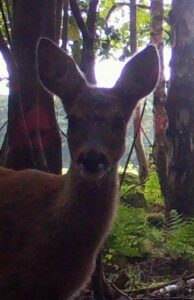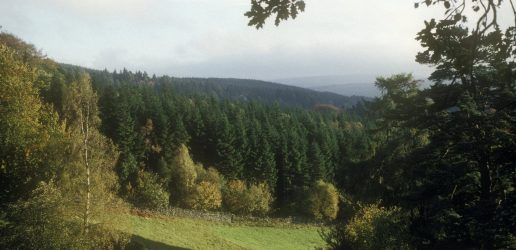A new study by researchers from the University of Stirling and Forest Research is aiming to examine the impact of deer on the development of woodland ecosystems by using camera traps. The innovative study, which has received funding from the British Deer Society, will use automated cameras to quantify woodland use by deer as well as assessing their impacts on woodland vegetation/structure, and the potential cascade of effects on woodland biodiversity.

This study forms part of the ongoing Woodland Creation & Ecological Networks (WrEN) project, a large-scale natural experiment designed to look at the development of biodiversity in secondary woodlands created over the past 160 years.
Since 2013, over 100 woodland sites created on former agricultural land between 1850 and 2000 have been surveyed for a wide range of species. To date, over 1100 species have been recorded, including vascular plants, lichens, bryophytes, invertebrates, small mammals, bats and birds.
WrEN’s initial findings have improved our understanding of how woodland attributes (such as vegetation structure) and landscape-level factors (such as the degree of connectivity) influence successful colonisation and capitalisation of new resources by woodland biodiversity. Woodland structure has been identified as a key variable for many groups of woodland species.
New insights from the camera trapping study, in addition to existing data, will give valuable information to maximise the benefits of woodland creation for biodiversity and help inform future conservation actions.
More information on this partnership work is available from the WrEN project website.
New research has been published which explores how to enable and encourage access to woodlands for diverse members of the public.
Forest Research has been involved in a project focusing on efforts to improve inclusivity in biosecurity practices by exploring how to integrate different knowledge systems into mainstream decision-making.

Forest Research has released the latest Accredited Official Statistics on woodland and forestry in the UK.
New research has been published which explores how to enable and encourage access to woodlands for diverse members of the public.
Forest Research has been involved in a project focusing on efforts to improve inclusivity in biosecurity practices by exploring how to integrate different knowledge systems into mainstream decision-making.

Forest Research has released the latest Accredited Official Statistics on woodland and forestry in the UK.